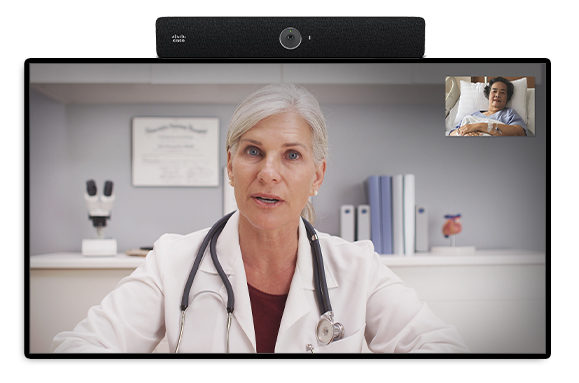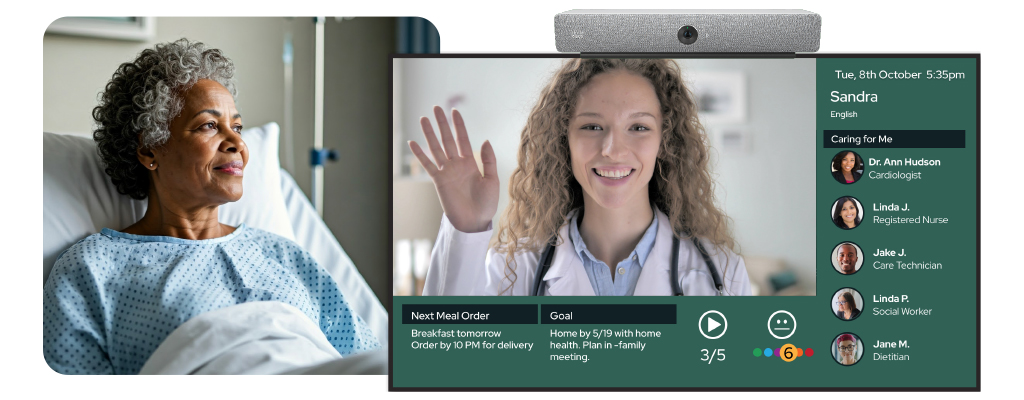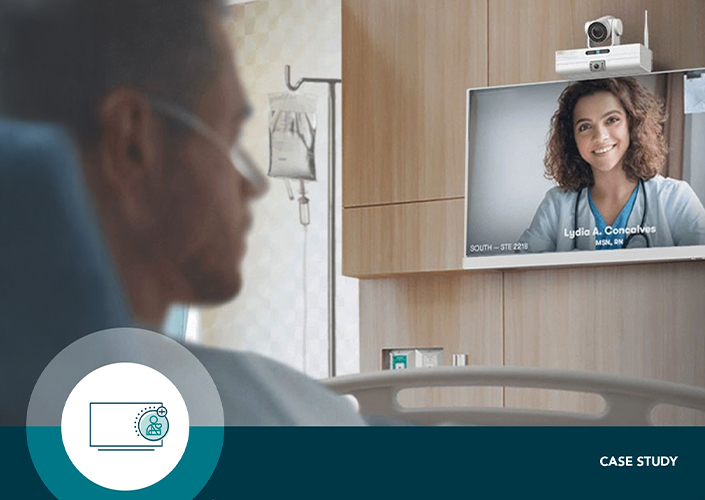Four leaders share their experience with virtual care
Integrated virtual care means something different at every organization.
Our friends at The Beryl Institute recently hosted four leaders from SONIFI Health customer organizations to share their experience with virtual acute care and what their tips are for other organizations.
Led by SONIFI Health Nursing Executive Lisa Branson, the panelists included:
- Paula Campbell, RN, MHI
Chief Nursing Information Officer at The Christ Hospital Health Network - Donna Summers
Chief Nursing Informatics Officer at Henry Ford Health - Diane Wiersch, CPM
Senior Clinical and Revenue Applications and Support Expert at Lehigh Valley Health Network - Nicole Yowell, MBA, LSSBB, SA
Virtual Health Leader at Cook Children’s
Here are excerpts of some of their insights. You can also watch the discussion here.
On finding your why
Paula Campbell: “One of our reasons for looking at virtual care was we had staffing challenges.
We had a high vacancy rate in our med-surg area, we were spending a lot of money on external agencies and high-cost premium pay.
But the really important part is the team member experience.
Knowing that your program is going to evolve, always stick to your why. Why are we doing this, and are we addressing that? That is very important.”
On starting the process
Donna Summers: “Once we knew we wanted to do virtual care in the acute care setting, we just started learning. Going to every webinar, every discussion, every forum, to find out what was working for people.
We were visiting and reaching out to lots of vendors. We knew we wanted to know they had a roadmap for other AI capabilities.
We wanted to be thinking of what we needed in the near term, but also in the future.”

On making it make sense
Nicole Yowell: “When we look at vendors, we really look for somebody that’s a partner, not just a service provider. We really want the platform to be easy to use, but give us some administrative control.
If we want to get this adopted and utilized, we have to make it super easy.
How can we truly make it integrated into nurses’ day-to-day work and not have to be another layer of what they’re responsible for doing? Or feel like there’s technology thrown at them and now they’re not sure what to do with it?
In the room, we want patients to feel like this is their safe place.
So we wanted to make sure that that experience really made sense for patients and families, that we would consider their privacy and ultimately make it comfortable.”
On being prepared
Diane Wiersch: “Make sure that your vendor is ready to work with you and address issues as they come up—because they do.
You want to address those as quickly as you can so that users aren’t frustrated with the systems.”
On selecting a virtual care vendor
Paula Campbell: “We were looking for a technology that would integrate with our current infrastructure, including integrating with our TVs with SONIFI Health.

We wanted an in-room technology because we didn’t want to add any additional burden to the nursing staff. We wanted something that was going to be a smooth transition for them that was intuitive.
For our staff, they were part of the design. They were part of the analysis. They came along on our site visits. And they really developed the education plan, because it had to be something that would work for them, and that they had input on design.”
On staying focused
Donna Summers: “The formation of our virtual care program was based on baseline analytics that we felt like we could make a difference on.
One of the first things we did was figure out what metrics went with the use cases. We’ve been very focused. I think this is a really important element.
Stay to what your scope is, and don’t make it too complicated, so you can scale.”
On getting staff on board
Donna Summers: “I think that you cannot underestimate the fact that there’s a lot of fear around using this technology in the in the acute care setting.

We would give them more nurses if we had more nurses. We just don’t have them to give, which was one of the reasons why we were going into this technology.
We partnered with our nurse educators, and it was incredible. They started circulating articles and having journal clubs that were specific to this. They would get nurses to think about how we could professionally engage with this new model of care.
Also, anybody who’s going to be walking in and out of those rooms—be it your EVS, your dietary staff, your physicians—make sure that they understand what it is you’re doing and why you’re doing it, because they can be strong advocates.”
On considering the patient experience
Paula Campbell: “We have a very strong patient experience, one that we’re very proud of. So for us it was, ‘Let’s not lose this.’
So we engaged our patient experience director as part of the team from the beginning, getting their feedback. And we looked our consumer advisory group for recommendations. We met with them frequently, and they actually became our ambassadors in the community.
Another area that we leveraged was a local reporter who spends a lot of time on healthcare technology and changes in healthcare. She came on site and helped to educate our community.
We were the first in our area to go live with this kind of model, and it was important to educate our patients even before they became patients on what they could experience when they came to The Christ Hospital.
We had a 90-year-old former nurse who was one of our first patients. Being a nurse myself, I wasn’t sure what she’d think about it, knowing that it’s such a change in practice, but she was very appreciative.
Some patients, they just want to chat, and they like that extra attention.”

On connecting with patients
Nicole Yowell: “Being able to bring care to patients where they are is always valuable.
We try to ensure that it’s not just about convenience, but it’s also just as comprehensive as an in-person visit.
They really want to get that one-on-one experience with the bedside nurse and the virtual nurse. Getting that time really was an opportunity to further connect.
One mom said that her son would really love the extra attention that he would get from the bedside nurse.
We’re doing a lot with using virtual care to bring the patients’ families in when they can’t be in the room.
We integrate our interpreter services into our video platforms, which really helps to create a sense of comfortability for our patients and families and our staff. There’s no communication barriers there that they would be experiencing otherwise.
We’re really creating care that’s centered around the patient and the family, as opposed to the patient or family trying to chase that care down. That has been probably the most significant win for us.”
On setting standards & expectations
Diane Wiersch: “At Lehigh Valley, we had multiple platforms in use. We started an advanced ICU with tele-sitting over 20 years ago, we also had cameras on carts, and we also started doing virtual care through Epic.
When we had a construction project for a new facility, we wanted to streamline and simplify. So we picked one solution and got it integrated with SONIFI Health.
Now we have a standard solution that we’ve got deployed to over 400 rooms already, we’ve got another 250 coming, and we have a new ED and inpatient unit at one of our facilities where we’re replacing legacy cameras.
With that number of rooms, it’s great to have a standard solution. Once we got people using the new standard design, it’s now the expectation. Providers are expecting it, video sitters are normal, it’s all expected now.”
On seeing the results

Paula Campbell: “Within four or five months, we were able to hire 24 nurses.
Our virtual nurses are required to be experienced nurses, and they really are mentoring our new nurses who you typically see on med-surg units.
We look at flow sheet documentation, which is where most nurses live. We have seen a decrease in documentation time because we’re taking that burden off them with virtual nurses.
We’ve reduced our agency usage, and we have seen a decrease in turnover and first-year attrition.
The other thing that we really wanted to do was create a connected team-based approach to care.
So we look at how often we are having virtual visits with our patients. If it was just on admission and discharge, the adoption of the team-based care wasn’t occurring.
But once we started seeing that model change, we were easily able to see that using analytics, and then we adjusted our care model based on that.”
On taking small steps
Nicole Yowell: “Fully focusing on the why and not the how is huge. Make sure you know exactly what problem you’re trying to solve, and how it will affect your organization.
Don’t try to boil the ocean; it can be really intimidating to take on projects like this. And especially if it’s something new for your organization, it can take a little while to get the buy in.
Start with something small that might just inch along until you can hit the ground running with something that you can spread across your organization.”
On finding ROI
Diane Wiersch: “Our virtual nurses are doing thousands of calls across all of our facilities—doing admissions, discharges, education visits—saving hundreds of hours for the bedside staff.
We’ve had some significant ROI with our camera utilization for video sitters who replace the need for one-to-one sitters, and that’s about $150,000 a month in savings.
And there’s the convenience that our providers love. We have a lot of specialty providers doing post-op visits, specialty consults, discharge, site consults that would not get done in a timely fashion if people did not have virtual care.”
On seeing how it’s all worth it
Donna Summers: “One of our goals was to improve our nurses’ experience. My biggest win for this is the fact that we’re giving time back to the bedside nurses, and they’re feeling some relief.
We’ve tracked that with one virtual nurse, we were giving 100 hours back to the bedside. Virtual nurses are doing 95% of admissions and discharges, they’re catching near misses in rounding.
My favorite thing is, when I was rounding and asking nurses how it was going, one nurse said, ‘Oh my gosh, I have three admissions coming this morning and I was just getting ready to panic. And then I remembered I have a virtual nurse!’
So many nurses will tell you that this technology is one of the best things we’ve ever done for them.”

